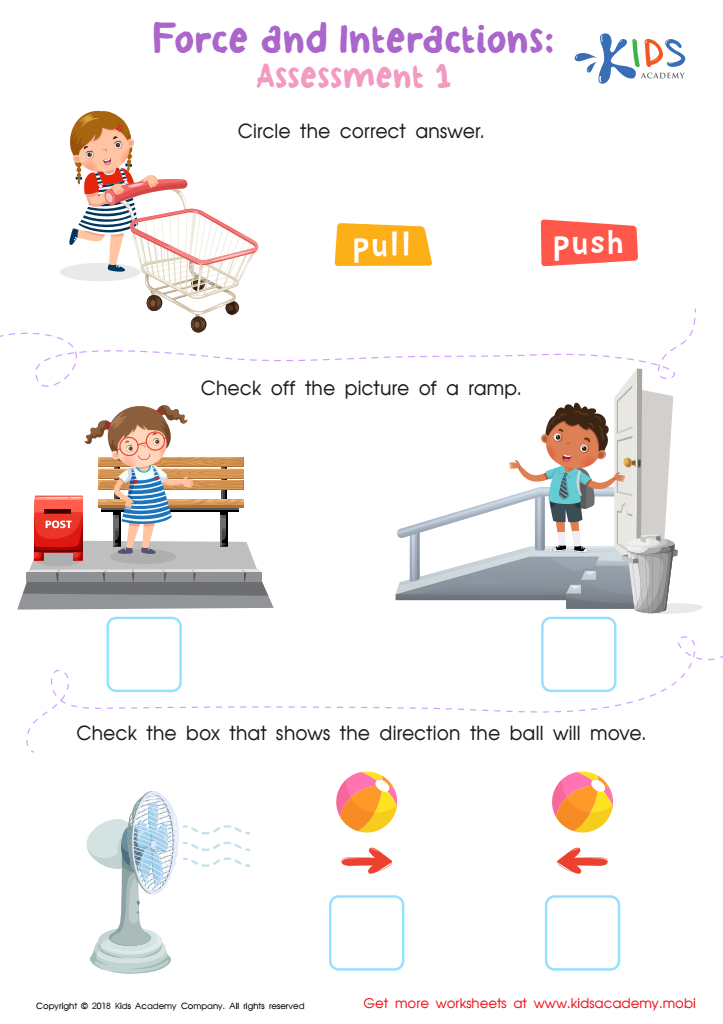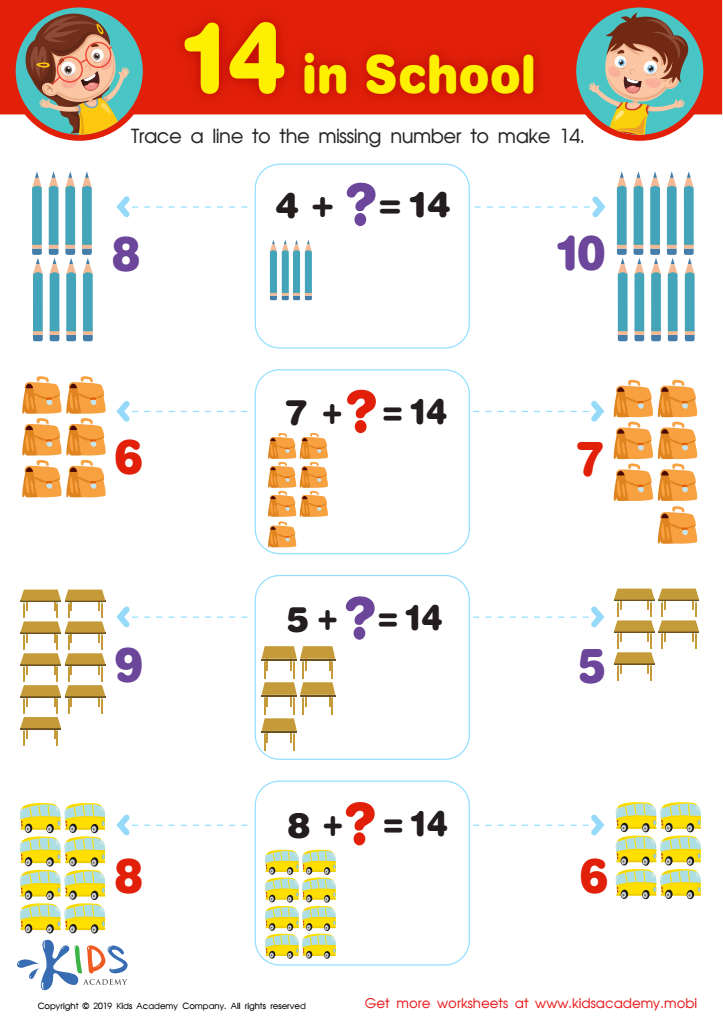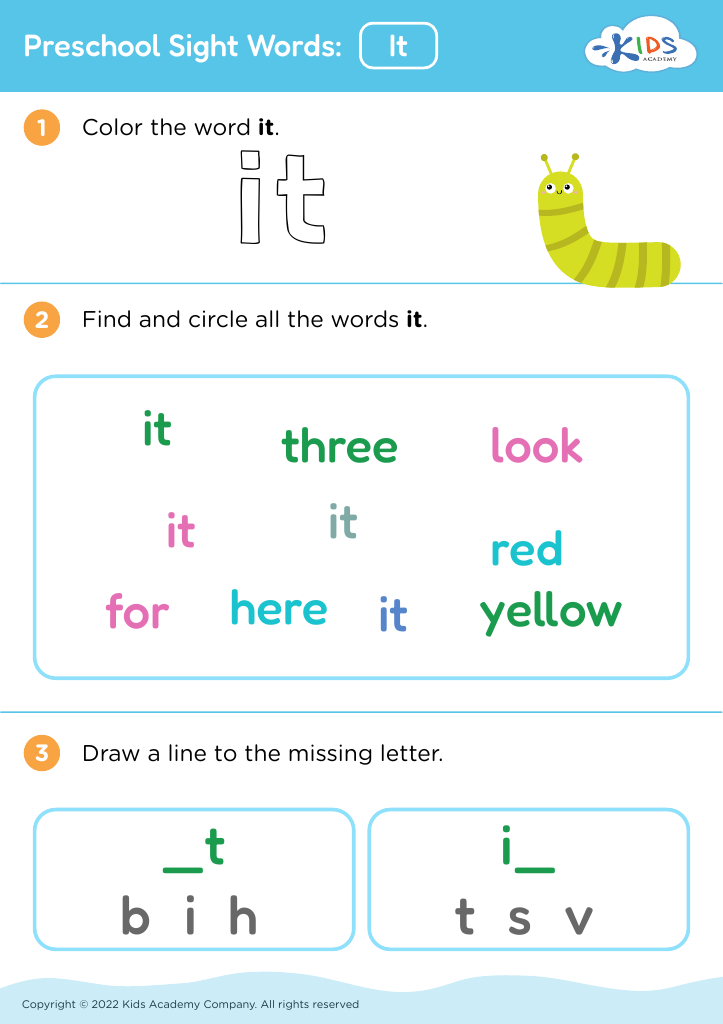Recognize shapes Worksheets for Ages 4-5
4 filtered results
-
From - To
Explore our engaging "Recognize Shapes Worksheets for Ages 4-5," designed to inspire early learners as they develop crucial shape recognition skills. These worksheets feature colorful illustrations and interactive activities that make learning fun and effective. Ideal for preschoolers, the worksheets encompass a variety of shapes, including circles, squares, triangles, and more, helping children identify and differentiate them in a playful manner. Each activity encourages children's fine motor skills and cognitive development while making shape recognition an enjoyable experience. Perfect for classroom use or at-home learning, our worksheets provide educators and parents with valuable tools to support their child's early learning journey.


Force and Interactions: Assessment 1 Worksheet


14 in School Worksheet
Recognizing shapes is an essential foundational skill for children aged 4-5, crucial for their cognitive development and later academic success. Understanding shapes fosters critical thinking as young learners begin to identify and categorize objects in their environment. This skill enhances their ability to solve problems, recognize patterns, and understand spatial relationships, all of which are integral to mathematics, science, and art.
Moreover, teaching children to recognize shapes sets the groundwork for more advanced concepts such as geometry. As children explore and identify shapes in their surroundings, they develop observational skills and learn to express their thoughts through language, enriching their communication abilities.
In a fun and engaging context, parents and teachers can integrate shape recognition into everyday activities, from playing games to creating art projects, making learning both effective and enjoyable. This playful interaction strengthens the child-caregiver bond while reinforcing lessons learned.
Moreover, recognizing shapes promotes fine motor skills as children manipulate objects, such as building blocks or drawing shapes. Supporting shape recognition at this early age boosts confidence and motivation in learners, encouraging a lifelong love for learning. Therefore, parents and teachers play a crucial role in nurturing this important aspect of early childhood education.
 Assign to My Students
Assign to My Students






















